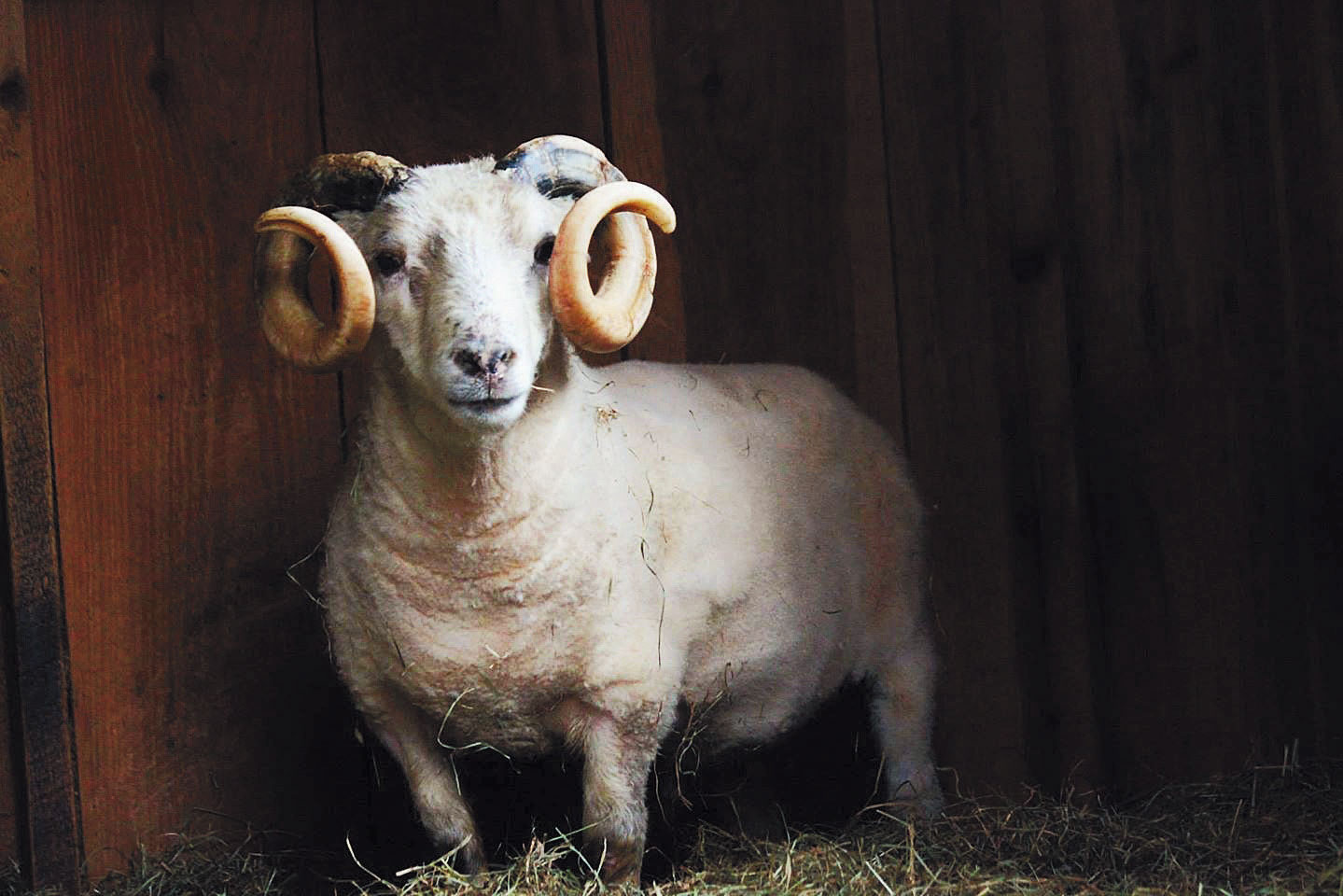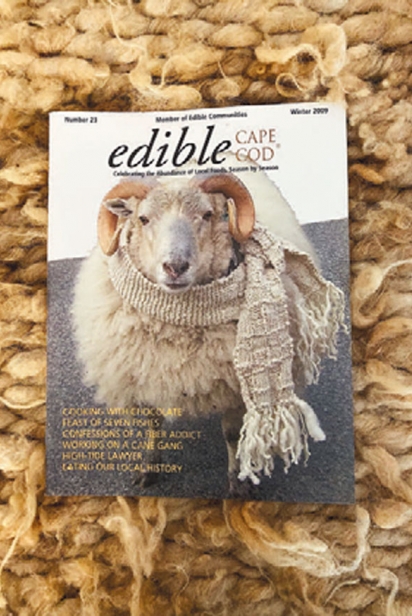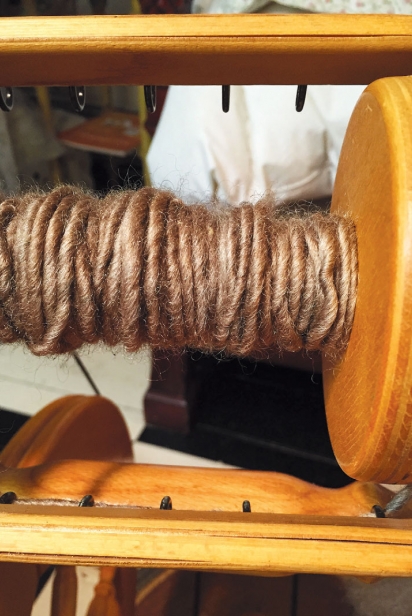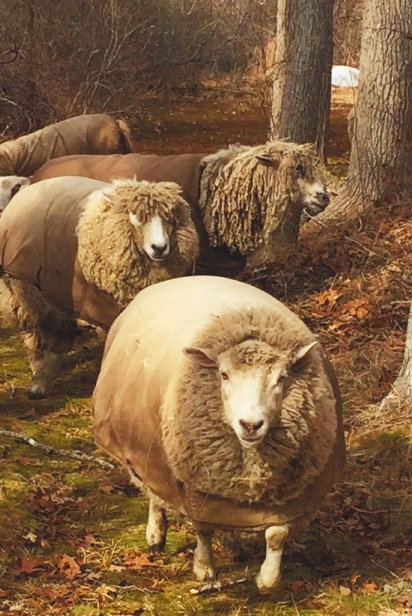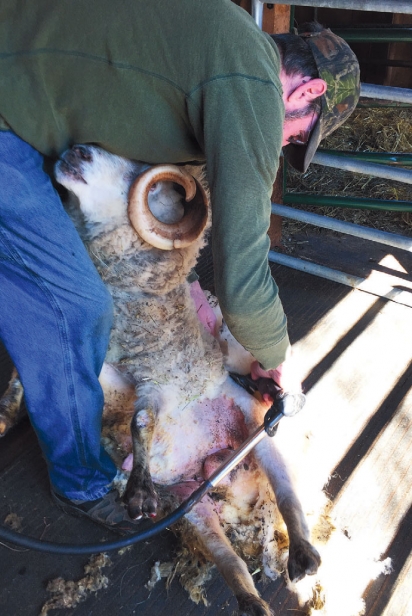Farmgirl Confidential: Gristmills, Sheep and the Colonel
When we recall the history of the early colonial settlers of Cape Cod, it is always their maritime pursuits that we celebrate: whaling ships and great voyages to distant, exotic lands. But the first task at hand for this pioneering generation of Cape Codders, before they were drawn to the vast expanse and wealth of the sea, was the establishment of home. The first settlers of Cape Cod had perhaps the most varied and widely diversified resources of all New Englanders to work with and soon became a self-sustaining, unique society due to their remote, insular life. The reliance on the achievements of the inland colonies beyond their remote peninsula became inconsequential. Barrel makers, ship builders, harness makers, fishing, salt works, grist mills, and every cornerstone of the life they were accustomed to soon occupied every town.
Sheep were introduced into the English colonies almost as soon they were settled. In Massachusetts sheep arrived around 1624 and by the 1640s there were about 100,000 head of sheep in the new world settlements.
Sheep husbandry became an early and important industry of Barnstable County and sheep could be found roaming freely in the fields, marshes and woodlands throughout the county. The hay of the salt marshes and later production of “English Hay” served the settlers well in winter and the sheep herds grew in size quickly. During the 1640s and 50s many islands off the coast were cleared of predators and set aside for sheep, including Nantucket, Martha’s Vineyard, Naushon (where they still roam freely today) and other Elizabeth Islands. Sheep became a major player in the domestic economy.
The demand for wool was so high that it was also imported from England. But early on, the British government banned export of any more sheep or wool to the colonies to protect the wool trade in Britain, and this restriction on the colonies was one of the many provocations that ultimately led to the American Revolution. At that point the sheep industry in New England expanded rapidly despite or perhaps because of the ban.
Wool production became a staple resource for women in the colonies. Every well-appointed home had a spinning wheel and loom, and wool gave ample employment to spinners and weavers as a home industry supplying the colony and their families with not only wealth but warmth and security.
In 1663, in Brewster, the first water-powered grist and fulling mill in the country was founded, located on the site of the Stony Brook Mill. The fulling mill began sharing the grist mills’ water power in 1665. Homespun woolen cloth was brought there by home spinners where it was then cleaned and fulled. Here every good housewife for miles around sent the product of her loom. Unfortunately, in 1760 the fulling mill and thousands of dollars’ worth of homespun woolen material burned. Fifty-four years later (1814) the Winslow family built a woolen mill on the fulling mill foundation to produce the first “factory made” woolen cloth in America.
Soon most every town had its own carding, fulling and cloth-dressing establishment or mill. Many water-powered grist mills were adapted to process wool throughout the Cape by the late 1700s, and shortly thereafter other mills were specifically constructed for the Cape’s flourishing woolen industry. The woolen cloth woven by the women of Barnstable County was highly esteemed throughout New England.
During the American Revolution and again in the War of 1812, the British navy came ashore and raided many small farms and the islands’ tenant farmers of their sheep. Official British records state that in 1778 they “secured about 1000 or more sheep and lambs on Naushon Island,”
By the end of these wars, the coastal flocks had been decimated but soon the flocks were built back up by determined farmers. Eventually, during the late 1800s, the mills of New Bedford and Fall River had grown into huge operations and lured away most of the business from the Cape’s small mills.
Sheep and Man Throughout History
Intelligent, complex, social. These are all words one would quickly ascribe to humans but would never imagine attributing to a sheep. It is odd how little most of us know about sheep, given how deeply entrenched they are in our culture, their domestication being one of the most important events in human history. Sheep are actually surprisingly intelligent, with an impressive memory and recognition skills. They build friendships, react to facial expressions, prefer a smile to a frown, and remember faces for years. They were the first domesticated animal, apart from the dog, and have been living with people for thousands of years. They were domesticated between 11,000 and 9000 B.C. for the use of their meat, hide, milk and later, wool.
Selection for wool quality has been of primary importance in the evolution of modern sheep breeds. Shearing weight, consistency and fineness are the sought-after attributes in wool production, but 10,000 years ago wool was just randomly collected, shed by wild sheep, attached to bushes and strewn along the ground.
Domesticated sheep today were derived from the wild mouflon (Ovis orientalis) which still exists today. It’s a small, double-coated, self-shedding sheep with very large horns that has since diverged sufficiently to be considered a totally different species. Recent archeological discoveries have found that ancestors of the mouflon were kept in small flocks enclosed between houses in early settlements at the beginning of man’s transition from hunter gatherer to farmer. Orphaned lambs from the hunt were most likely brought to camp and raised by the women and children where the young lambs imprinted on their human shepherds, initiating the first steps in their domestication.
Recent scientific investigations into the timing of sheep domestication, revealed through genetic markers, found that sheep dispersed across Eurasia and Africa via three separate migratory events. These first migrations include not only the wild mouflon, but also include breeds recognized as “primitive” which were similar to the Shetland, Orkney, Soay and other short-tailed sheep of today. These primitive sheep, from a second migratory event of sheep domestication, have survived in far-removed corners of the northern hemisphere, mainly on remote islands. There they have survived in harsh environments virtually untouched by humans. A third migratory episode, involving sheep with improved production traits, shaped the vast majority of present-day breeds.
The Shetland is a small, unrefined, northern short-tail breed which still sheds its fleece, and has survived on the remote Shetland Islands where it has provided a meager income for Shetland Islanders for centuries. The famous “wedding shawl,” spun so fine with the softest neck wool (spun with only three strands of wool) that it could be pulled through a wedding ring when finished, is the pride of the islanders. The sheep are hardy and tiny compared to the sheep breeds of today with every color or color combination imaginable. The small-statured rams are notorious for their fierceness towards other rams and many tales have been told of them having killed much larger rams during fights when in rut come mating season. The ewes are independent and bold. Their fleece varies incredibly from double-coated (both a long coarse outer coat and a fine downy inner coat), single-fleeced, long-fleeced, fine short fleece or all of the aforementioned combined in one fleece. Totally unlike modern sheep breeds which are bred for uniformity head to tail, the islanders worked with what they had and harvested different types of wool from various parts of the sheep to suit their purpose. Fine neck wool for shawls, coarse wool for outer wear, blankets and sails, leaving Shetlands barely touched by human selection.
During the 1970s, the Rare Breed Survival Trust Limited (RBST) in the U.K. became very concerned that this beautiful ancient breed of sheep was destined for extinction. Around the same time, Gordon D. Dailly, the owner of African Lion Safari in Canada, was alerted to the plight of this rare breed. The Colonel (as he was known) had a passion for collecting rare wild animals, so off to England he went to secure a flock. When the selection process was complete, 4 unrelated rams and 28 ewes were chosen, exemplifying the widest range of colors possible. The Colonel’s flock had to spend a one-year quarantine in the UK before being transported to Canada. Near the end of 1980, the quarantine period was finished and in November of that year the Colonel flew the entire flock to Canada. Once they reached the farm, a new quarantine period began and no sheep were allowed to leave the property until their first offspring had reached two years of age.
During that same year, a couple from Long Island, Linda and Tuthill Doane, fed up with urban sprawl, purchased 90 acres of woodland on top of a mountain in Vermont and settled down. By chance, Linda went to a meeting of a local ladies’ group and there learned about spinning wool. It piqued her interest and she got a spinning wheel and immediately became hooked. She fell in love with the primitive wool of the Shetland and decided the addition of these sheep to their new property was a must. But when she tried to find this breed she learned that no one had any idea where they could be purchased in the U.S. Someone suggested she contact the RBST Limited in the U.K. They suggested that the Doanes contact African Lion Safari in Ontario, Canada, and off they went to meet the Colonel. It was a long haul until Linda and Tut could finally bring the sheep home. Years of red tape and more quarantining, but finally in the spring of 1986 the sheep arrived. They transported 21 rams and 42 ewes, in addition to the 1986 lambs that had been born during quarantine, across the border to their Maple Ridge Farm in Vermont.
Abe, the ECC Winter 2009 Cover Boy
In 2006 I became interested in sheep. Maybe it was in my blood, my grandfather Joseph Worthington was a wool broker. My parents said wool was all my grandfather ever talked about and it bored them all to death. He left the business to my father who sold it immediately when I was very young. I don’t really know why, but I bought my first sheep, a Scottish Blackface ram named Cookie. I knew nothing about sheep but I quickly learned that sheep, being herd animals, needed a companion. I set out to find Cookie a friend.
It was July and someone suggested that I might find a sheep for sale at the Barnstable County Fair. There I met Doug Gillespie who was the Massachusetts Commissioner of Agriculture at the time. Doug ran an educational barnyard demonstration that was the highlight of the fair. Around 1996 Doug had become interested in the newly-introduced Shetlands and he began building a flock. He bought ewes around New England and collected rams from across the country. He had part of his rare flock at the fair. They were quite a conversation piece with their colorful wool, small stature and cheeky attitudes. Doug chose a young ram lamb friend for Cookie and put him in a large open box in the back seat of my mother’s Lincoln town car which I had borrowed. Needless to say, that didn’t go well but we weaved through summer traffic with the little ram plastered to the back window and eventually made it home.
I didn’t realize what a special little sheep I had acquired. I did not know anything about the breed, its rarity or uniqueness at the time. My new little ram was one of the first of the lambs born to Doug’s flock, and one of the earliest Shetlands in the U.S. That little ram that I brought home was Abe, the edible Cape Cod Cover Boy in winter 2009
It was the beginning of my love affair with Shetland sheep and soon I started building my own little flock. A few years ago, I was fortunate enough to meet the Doanes and be invited to Maple Ridge Farm to see the sheep referred to as the “Dailley” line of Shetlands. Incredible little beasts with minds of their own, developed over centuries of running wild. Once the breed began to disperse across America it quickly grew in popularity, becoming one of the most popular breeds for 4-H exhibitors and small farmers.
The Livestock Conservancy no longer lists the Shetland as “Critical” but rather “Recovering”. They say that niche production, especially the specialty wool market, has been essential to the survival of this rare breed of sheep. Fiber artisans have a vested interest in diversity and have played a significant role in the conservation of many heritage wool breeds. Fiber arts all over the world have seen an enthusiastic revival and the attributes of this superior natural fiber is once again receiving the merit it deserves. Wool, one of the most effective natural forms of all-weather protection known to man, is coming full circle. Just as our forefathers knew all too well when they landed on Cape Cod, the world is made a better place with sheep and their incredible fiber.


